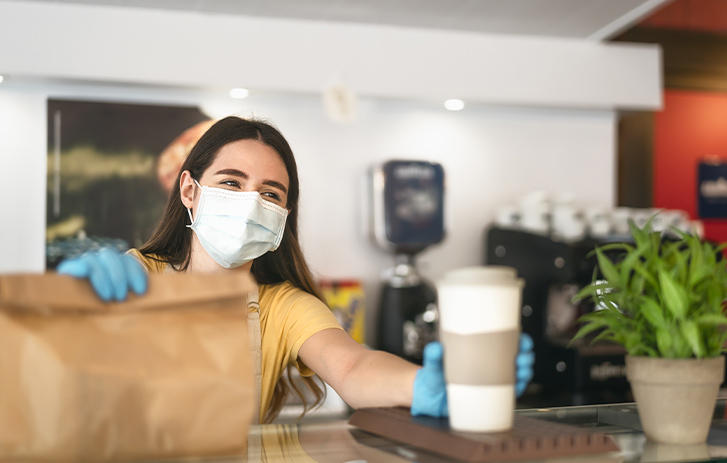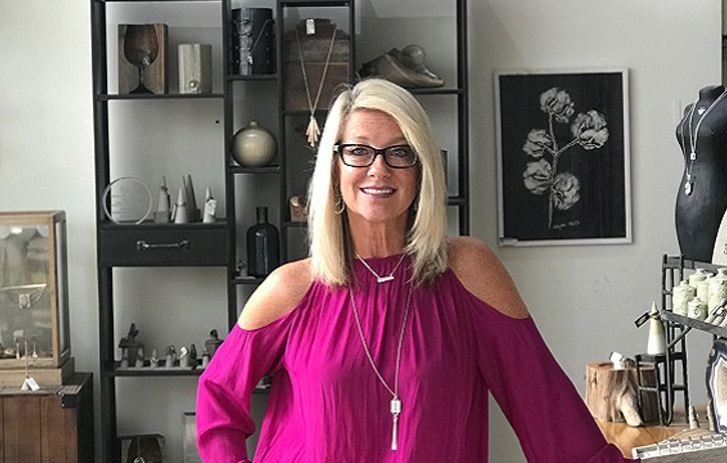8 Coronavirus safety tips for contactless business



To ensure a safe coronavirus shopping experience, your store must have the right safety protocols in place that meet local and state guidelines. Before you re-hang your 'Open for Business' sign, consider this retail health and safety checklist:
- Signage that clearly states your rules and requirements
- Contactless pickup and delivery options
- Digital ordering and payment options
- Updated restroom etiquette
- New fitting room rules
- Customer flow that encourages social distancing
- Employee and workplace safety protocols
- Examples of well-implemented guidelines
From outdoor business signs to contactless payment options, these eight coronavirus safety tips can help minimize face-to-face interactions and provide a safer retail shopping experience.
1. Hang signage everywhere
Make outdoor business signs to hang on your door or windows so customers know the new rules, and print additional posters for employee-only areas that reinforce safety and hygiene guidelines. A large outdoor banner also alerts customers of your new guidelines before they enter your store.
Use large, bold text and contrasting colors to make your signs easy to read from a distance. When creating your signs, consider including:
- Mask requirements
- A reminder to stay home when sick
- Store occupancy limits
- Consequences of rule violations
- Any additional store-specific rules or guidelines
2. Implement contactless pickup and delivery
Avoid face-to-face interaction between your customers and employees by offering a contactless process for your business transactions. Encourage customers to order and pay online or via phone for curbside pickup or delivery.
Once a pickup order is ready, place it on a table outside (or just inside) your storefront and include an “online orders” sign to avoid confusion. For contactless delivery, your delivery person can alert the customer via text or call once the order has been placed on the porch or doorstep.
3. Encourage digital ordering and payment
For in-person retail purchases, a QR code for your business is a quick and easy way to implement touch-free payments. The customer scans the code with a smartphone to open a link to the transaction, which can be paid with a linked credit card or PayPal.
Self-checkout systems also eliminate customer-cashier contact and are an increasingly popular method among shoppers amid the COVID-19 pandemic. For dine-in restaurants, customers can use their smartphone to order, further minimizing face-to-face interactions.






For in-person retail purchases, a QR code for your business is a quick and easy way to implement touch-free payments. The customer scans the code with a smartphone to open a link to the transaction, which can be paid with a linked credit card or PayPal.
Self-checkout systems also eliminate customer-cashier contact and are an increasingly popular method among shoppers amid the COVID-19 pandemic. For dine-in restaurants, customers can use their smartphone to order, further minimizing face-to-face interactions.
4. Update restroom etiquette
If the bathroom in your store or workplace has several stalls, put a bathroom rules sign on the door that limits use to one customer or employee at a time. Investing in an automatic paper towel dispenser and touchless faucets—if your budget permits—is an extra step to help prevent the spread of germs.
For businesses in the food service industry, clean and disinfect the bathroom every 30 to 60 minutes. If you are not in food service, consider closing off the bathroom to customer access.
5. Reconsider fitting rooms
Many clothing stores have closed their fitting rooms but extended the time limit on their return and exchange policy. Some have also invested in augmented reality technology, which offers a virtual fitting via a mobile app or website.
When a fitting cannot be avoided—like for suits or formal dresses—offer customers an online reservation system to book a fitting room. Limit the number of people using them, and sanitize every room before and after each use.
6. Direct customer flow
Directing customer flow inside your store is critical to achieving a safe work environment and customer experience. To maintain customer safety, floor tape and floor decals with brief, clear directions and arrows help create a one-way path for customers to follow throughout the store. If possible, use separate doors for the entrance and exit. Near the checkout counter, place floor markings six feet apart to indicate where people should stand when waiting in line to pay.
7. Rearrange employee workflow
Limiting employee interactions helps keep them safe and minimize potential exposure. Follow these tips:
- Create shifts to limit how many employees are working at a time
- Avoid shared equipment, such as desks and phones
- Hold meetings via video call
- Rearrange your break room to encourage social distancing
8. Seek out examples
As you work to create a safe environment, check out how other small business owners in your area have adapted to new guidelines and requirements. Ask trusted advisors about any innovative business practices they’ve encountered, such as creative contactless solutions for typically in-person interactions.
Retail is changing, and the right precautions minimize contact and keep your shoppers and employees safe. FedEx Office can help you design and print the materials you need to remind everyone of your new safety guidelines and protocols during the COVID-19 pandemic.elp build your brand. We have an array of templates to get you started, or you can custom design your cards to deliver client appreciation cards unique to your business.
Related reading

Small business guide to canvassing
If you have a deal that's worth sharing with the whole neighborhood, here's how to get the word out effectively.
read more
Contactless business practices to create a safe customer experience
Here's a retail health and safety checklist to make your retail business shopping safe/friendly in the age of COVID-19.
read more
Make shop small work year-round
Get four tips from HeidiJHale Designs on how they promote and grow their business utilizing the shop small movement.
read article